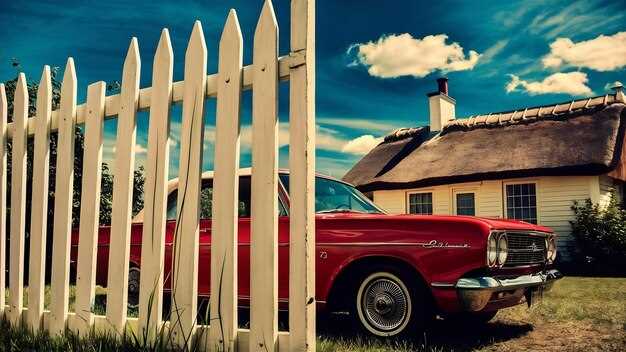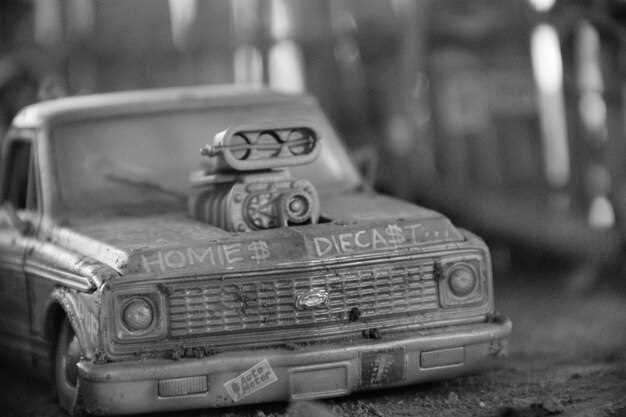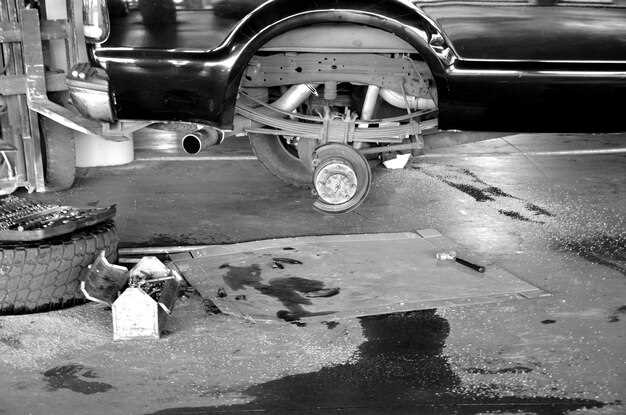
When it comes to classic cars, enthusiasts often face the dilemma of whether to pursue a full restoration or opt for a resto-mod. While both approaches hold their unique appeal, understanding the fundamental differences between them is crucial for making an informed decision. Restoration typically involves returning a vehicle to its original factory specifications, emphasizing authenticity and historical integrity. This process can be both time-consuming and costly, as it requires sourcing original parts and adhering to specific standards.
On the other hand, the resto-mod approach offers a more modern twist on classic vehicles, combining the nostalgic aesthetics of the original model with updated performance and technology. Enthusiasts who choose the resto-mod path often make custom modifications, enhancing driving comfort, safety features, and overall efficiency without completely sacrificing the vehicle’s original charm. This method allows for personalization, making it an attractive option for those looking to enjoy vintage cars in a contemporary context.
In this article, we will delve deeper into the key differences between restoration and resto-mod, examining the benefits and challenges associated with each approach. By the end, you will have a clearer understanding of which option aligns best with your automotive aspirations.
Key Differences Between Restoration and Resto-mod Explained
Restoration and resto-mod are two distinct approaches to automotive projects that cater to different goals and preferences. Understanding their key differences can help enthusiasts choose the right path for their vehicle.
Restoration focuses on returning a vehicle to its original factory condition. This process often involves sourcing authentic parts, maintaining original specifications, and preserving the vehicle’s historical integrity. Enthusiasts pursuing a restoration aim to revive the car’s classic charm, often valuing a vehicle’s age and authenticity over modern performance. The end result is typically a pristine, factory-like appearance that appeals to collectors and purists alike.
On the other hand, resto-mod combines elements of restoration and modernization. While retaining the vehicle’s classic aesthetics, this approach incorporates modern technology and performance enhancements. Resto-mod projects often include upgrades to the engine, suspension, brakes, and interior, providing a blend of vintage style and contemporary performance. Enthusiasts who opt for a resto-mod generally seek a balance between the nostalgia of classic cars and the reliability and efficiency of modern vehicles.
Another significant difference lies in the investment of time and resources. Restoration can be a lengthy and meticulous process, often requiring extensive research and the expertise of skilled craftsmen. This can lead to higher costs due to the need for genuine parts and labor-intensive work. Conversely, resto-mod projects may allow for more flexibility in terms of budget and timeline. Owners can choose which components to modernize while still maintaining the overall look of the vehicle, potentially reducing costs and time spent on the project.
In conclusion, the key differences between restoration and resto-mod revolve around the goals of the project, the methods employed, and the balance between authenticity and modern enhancements. Enthusiasts must evaluate their priorities to determine which approach aligns best with their vision for their vehicle.
Understanding the Authenticity Factor in Restoration vs Resto-mod

The authenticity factor plays a crucial role in distinguishing between restoration and resto-mod projects. In vehicle restoration, the primary goal is to return the vehicle to its original condition, adhering strictly to factory specifications. This approach involves using original parts and preserving the vehicle’s historical integrity. Enthusiasts value authenticity for its connection to the past and the craftsmanship representative of the era in which the vehicle was produced.
In contrast, resto-mod projects prioritize modern performance while maintaining the classic aesthetic. Resto-modders often replace original components with upgraded parts for improved reliability and functionality. While this approach sacrifices some authenticity, it appeals to those seeking a balance between classic looks and contemporary driving experience. The authenticity factor here is more nuanced; the vehicle may not be ‘original’ in the strictest sense, but it reflects a personal interpretation of how classic cars can innovate and evolve.
Collectors and purists might argue that restoration preserves historical value, whereas resto-mod is seen as a departure from authenticity. However, enthusiasts appreciate that both approaches hold merit, depending on individual preferences and purposes. Ultimately, the choice between restoration and resto-mod involves a personal decision about how to balance heritage with modernity, and understanding this authenticity factor is essential for anyone engaging in these automotive practices.
Evaluating Performance Upgrades: Restoration or Resto-mod?
When it comes to upgrading classic vehicles, enthusiasts often face a crucial decision: should they opt for a traditional restoration or embrace a resto-mod approach? Each choice carries distinct implications for performance enhancements, aesthetics, and overall driving experience.
Understanding the differences between restoration and resto-mod can help vehicle owners make informed decisions based on their goals:
- Restoration: Focused on returning the vehicle to its original factory specifications, restoration emphasizes maintaining authenticity.
- Resto-mod: Combines classic styling with modern performance upgrades, allowing for improved handling, power, and comfort without sacrificing the original look.
Here are some key factors to consider when evaluating performance upgrades:
- Performance Goals:
- Determine whether you seek enhanced speed, better handling, or increased fuel efficiency.
- Resto-mods allow for significant performance upgrades while preserving the vehicle’s charm.
- Budget Constraints:
- Restorations can be costly and time-consuming, often requiring rare parts.
- Resto-mods may provide a more cost-effective path by integrating aftermarket components.
- Future Value:
- While original restorations tend to hold their value better, well-executed resto-mods can attract a growing segment of buyers.
- Consider long-term investment potential when deciding on performance upgrades.
- Personal Preference:
- Reflect on your passion for classic cars and the driving experience you desire.
- Your attachment to the vehicle’s originality may steer you toward a restoration.
Ultimately, the choice between restoration and resto-mod boils down to personal goals and values, making it essential to carefully evaluate the intended purpose of the vehicle. By weighing these considerations, enthusiasts can select a path that aligns with their vision and enhances their enjoyment of a classic car.
Cost Analysis: Comparing Restoration Projects to Resto-mod Builds

When evaluating the financial implications of restoration projects versus resto-mod builds, several key factors must be considered. Each approach has its unique costs associated with labor, materials, and overall project scope.
For restoration projects, costs can quickly escalate due to the requirement for authentic parts and specialized labor. Restoring a classic vehicle to its original condition often necessitates sourcing rare components, which can be expensive. Additionally, skilled artisans may be needed for bodywork and paint jobs that closely match the original specifications. This aspect of restoration ensures that the vehicle retains its historical value, but it often comes with a higher price tag.
In contrast, resto-mod builds typically allow for greater flexibility in budget allocation. Owners can choose modern alternatives to original parts, potentially reducing costs significantly. Utilizing contemporary materials and technologies can also streamline the build process and lower labor expenses since modern components are often easier to install. However, while the initial investment may be lower, the long-term value and appeal of a resto-mod vehicle can vary widely, influencing resale opportunities.
Overall, potential project costs for restoration can range from thousands to tens of thousands of dollars, depending on the vehicle’s condition and the authenticity level desired. In comparison, resto-mod budgets may be more adaptable, often starting at a lower base. However, owners should consider the balance between initial expenditures and the potential for increased market value over time when deciding which path to pursue.
